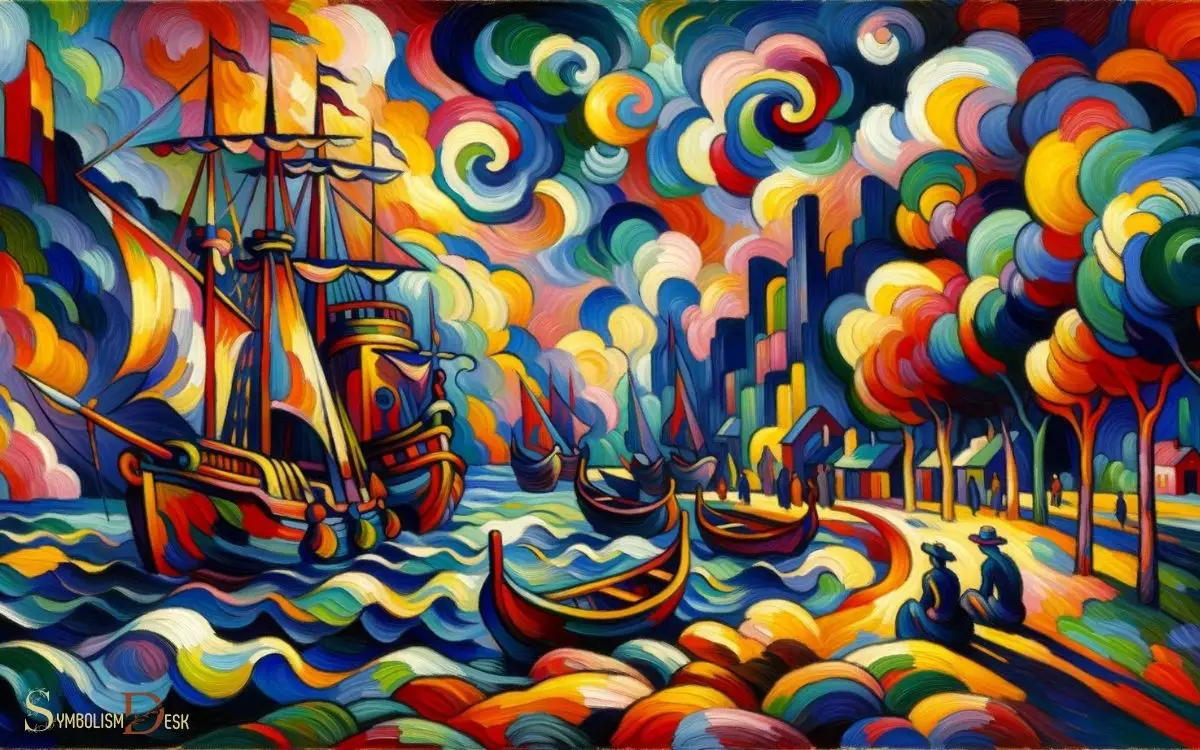Which Artist Rejected Impressionism to Create Paintings With Symbolic Meanings
Paul Gauguin is the renowned artist who turned away from Impressionism to create paintings rich in symbolic content. His transition into Symbolism marked a significant evolution in the art world, as he sought to convey deeper meanings through his work.
Paul Gauguin, a post-Impressionist artist, is famous for his contribution to the Symbolist movement in art.
Unlike Impressionists, who focused on capturing the fleeting effects of light and color, Gauguin’s work was characterized by:
- The use of vivid colors
- Flat two-dimensional spaces
- Strong outlines
- Symbolic or mystical themes
An example of Gauguin’s symbolic painting is ‘Where Do We Come From? What Are We? Where Are We Going?’ which explores existential questions through a series of enigmatic figures and symbols.
Paul Gauguin’s artistic evolution reflects his quest for deeper meaning, transcending Impressionism to pioneer Symbolism in art.

Key Takeaway
Early Life and Impressionist Influences
The young artist was deeply influenced by the Impressionist movement during his early years in Paris. Immersed in the avant-garde art scene, he absorbed the techniques of capturing light and color with quick, spontaneous brushstrokes.
This period marked the beginning of his artistic exploration, where he honed his skills in portraying the fleeting effects of atmosphere and light.
The vibrant city life and the mentorship of prominent Impressionist painters shaped his artistic style, leading to the creation of several notable works that showcased his mastery of the movement’s principles.
However, as his career progressed, a shift became evident in his approach to art, signaling a departure from the conventional tenets of Impressionism and paving the way for the development of a new artistic direction.
Transition: This departure from Impressionism marked a significant turning point in the artist’s career, leading to the exploration of deeper symbolic meanings in his paintings.
Departure From Impressionism
Influenced by the avant-garde art scene in Paris, the artist absorbed the techniques of capturing light and color with quick, spontaneous brushstrokes.
But a noticeable shift in approach marked a significant turning point in their career, leading to the exploration of deeper symbolic meanings in their paintings.
This departure from Impressionism was evident in the artist’s deliberate choice to move away from capturing fleeting moments and instead focus on imbuing their works with hidden messages and representations of inner emotions.
The transition showcased a desire to move beyond the surface beauty of the natural world and delve into the complexities of human experience and spirituality.
Through this shift, the artist sought to convey profound ideas and narratives, laying the groundwork for a new artistic movement that would come to be known as Symbolism.
This departure from Impressionism laid the groundwork for a new and innovative approach to art, one that delved into deeper symbolic meanings and narratives.
Symbolism in Gauguin’s Work
After rejecting Impressionism, Gauguin’s work embraced Symbolism as a means of conveying deeper spiritual and emotional themes. Symbolism in Gauguin’s work is evident through his use of vivid colors, simplified forms, and enigmatic subject matters. This approach allowed Gauguin to move beyond mere representation, imbuing his artwork with layers of meaning that invited personal interpretation. For instance, much like the symbolic meaning of the pinata, his compositions often held hidden metaphors, encouraging viewers to look beyond the surface. Through this lens, Gauguin’s paintings became a vessel for exploring mythology, spirituality, and the complexities of the human condition.
His paintings weren’t intended to represent the physical world realistically but rather to evoke powerful emotions and ideas. For Gauguin, color was symbolic, and he used it to express the essence of his subjects rather than their literal appearance.
He often incorporated symbolic elements such as Tahitian religious motifs and mystical references, infusing his work with deeper meanings.
Gauguin’s Symbolist approach allowed him to move beyond mere visual representation, creating art that resonated with symbolic significance and offered viewers an insight into his inner world and personal beliefs.
Influence on Modern Art
Gauguin’s Symbolist approach significantly impacted modern art, shaping the trajectory of artistic expression in the late 19th and early 20th centuries.
His rejection of Impressionism in favor of using visual elements to convey symbolic meanings influenced artists such as Pablo Picasso and Henri Matisse.
Gauguin’s bold use of color, flattened perspectives, and emphasis on conveying emotion and meaning over realistic representation laid the groundwork for the development of Fauvism and Cubism.
Picasso, in particular, was inspired by Gauguin’s departure from naturalistic colors and forms, leading him to explore new ways of representing reality in his groundbreaking works.
Additionally, Matisse’s use of color and form was influenced by Gauguin’s departure from traditional artistic conventions. Gauguin’s Symbolist approach thus played a pivotal role in the evolution of modern art.
How Did the Rejection of Impressionism Influence the Creation of Paintings With Symbolic Meanings?
The rejection of Impressionism prompted artists to explore deeper, symbolic meanings in their work. By using symbolic shadow shortcomings meaning, artists conveyed complex emotions and themes through their paintings. This shift led to the creation of artworks that delved into the human experience and explored deeper psychological and philosophical concepts.
Legacy and Impact
The Symbolist approach of rejecting Impressionism to convey symbolic meanings had a lasting impact on the trajectory of modern art. Symbolist artists aimed to evoke emotions and ideas through their work, departing from the naturalistic representation of the Impressionists.
This departure opened the door to a new wave of artistic expression that prioritized the inner world and subjective experience.
The legacy of Symbolism can be seen in the evolution of art movements and the continued exploration of the symbolic and metaphorical in art.
Below is a table highlighting the legacy and impact of Symbolism on modern art:
| Legacy | Impact |
|---|---|
| Emphasis on inner world | Expanded artistic expression |
| Exploration of subjective experience | Influence on subsequent art movements |
| Use of symbolic and metaphorical elements | Continued relevance in contemporary art |
The Symbolist rejection of Impressionism sparked a shift in artistic paradigms, leaving an enduring mark on the art world.
Conclusion
Paul Gauguin rejected Impressionism in favor of creating paintings with symbolic meanings, a departure that had a lasting impact on modern art.
His use of vivid colors and symbolic imagery continues to inspire artists and art enthusiasts around the world.
Gauguin’s unique approach to art has left a lasting legacy and has contributed to the rich tapestry of artistic expression.






